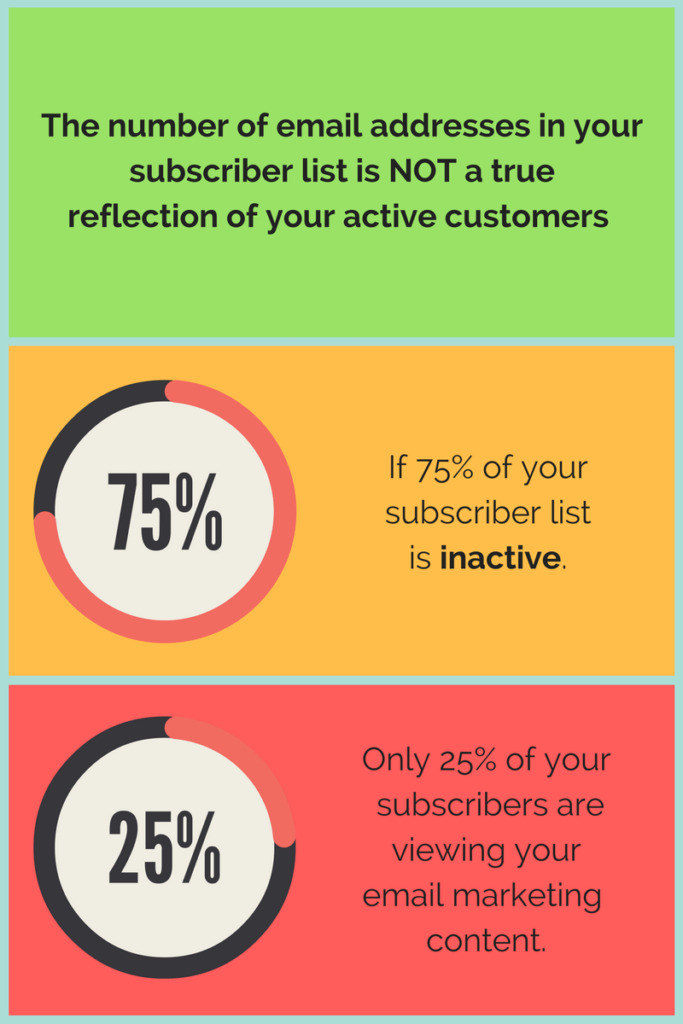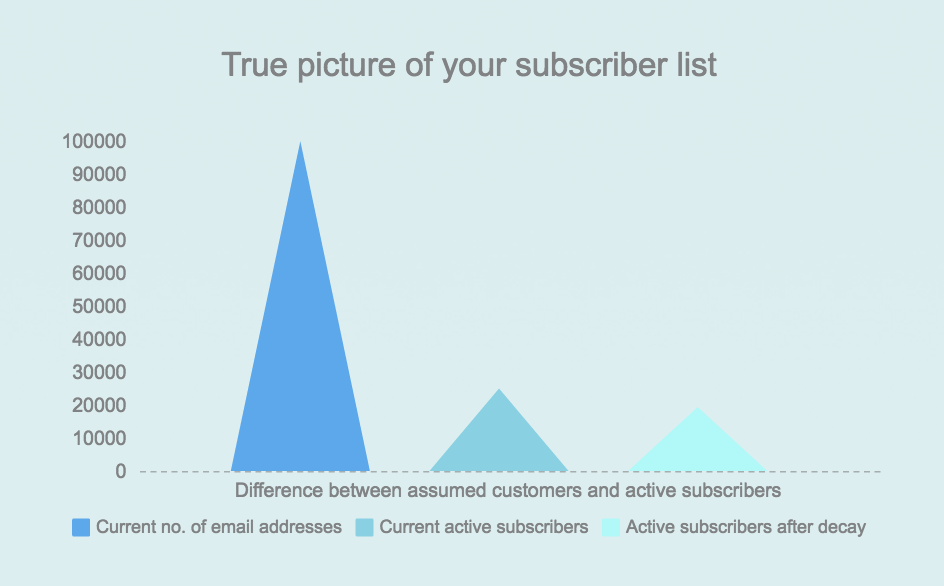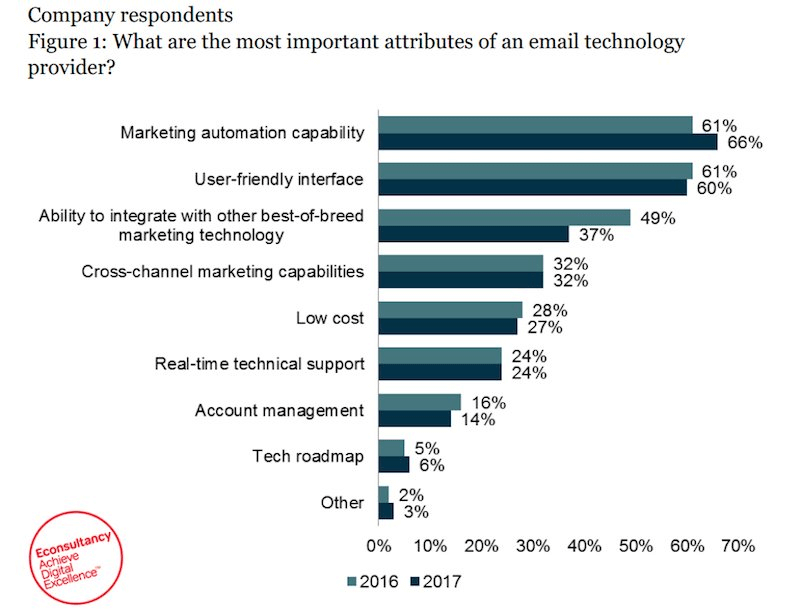5 Signs That Your Email Marketing Has Plateaued and How to Reignite It


Let's say you started off your email marketing with a bang! The channel offered the promise of high ROI and you achieved great results initially. However, since then, momentum has slowed down and you're not sure how to turn it around? Don't fear, this is not uncommon.
We've outlined 5 signs that your email strategy has plateaued and some easy ways to inject oomph back into your email marketing!
1. Open and click rates are in decline

This first sign that your email strategy is stagnating is a concern, because of the tandem decline in these email metrics. If your open rate is dipping, but your click rates are still high, it's not necessarily a huge issue, as the importance of open rates is often over-emphasised. Over time, your email list will naturally decay. So, if you're spending less on acquisition, your open rates may decrease – but your click rates could still be high. When both metrics are falling, then you need to revisit your strategy.
Pro tip:
Are you sending your too many emails? Are your subject lines engaging? Is your email content still relevant to your subscriber needs? Ask yourself these questions and start evaluating the impact of each element of your email marketing and put a testing process in place to find out where you need to improve.
2. Revenue per email sent has dropped
A great metric to track is the amount of pounds per 1000 emails sent. Establishing this figure should reduce the temptation to continue sending lots of emails to subscribers who have lapsed and disengaged. This is a perfect time to assess your list health and create a better segmentation and targeting process.
The following graphic demonstrates the findings from Marketing Sherpa's research, which showed that up to 75% of your subscriber list could be inactive. A large number of inactive subscribers in your database will result in lower list value and revenue per email.

Pro tip:
Clean up your email list by reviewing engagement rates within your email database, segmenting the least active (and inactive) subscribers and creating a reengagement strategy for these users. Attempt to reactive these sleepy subscribers and remove from your list those who remain inactive after a series of reengagement emails.
3. CTOR (click-to-open-rate) has fallen below 15%
Has your click-to-open-rate dropped below 15%? We're talking about the percentage of openers that go on to click on links and CTAs (calls to action) in your emails. If your CTOR is below 15%, you have a problem. Once you've got people opening your emails, your content should be relevant and engaging enough for subscribers to want to click through to further content and offers.
Pro tip:
Here are some key questions to consider when your click-to-open rate is faltering:
- Does the email content reflect the value promised in the subject line
- Is there a good balance of punchy text and engaging images?
- Is the copy persuasive and compelling enough to encourages clicks on CTAs?
- How relevant and tailored to your personas is the email content?
Having got recipients opening your emails, it's crucial to grab their attention quickly, deliver clear and easy-to-consume messages, match expectations set out in subject lines and pre-header text, and give them compelling reasons to click on links, videos and CTAs.
4. The list just ain't growing!
This could be because too many people are unsubscribing or not enough people are becoming new subscribers. Research from Marketing Sherpa found that email databases decay, on average, by 22.5% annually, whilst B2B databases decays at a rate of 2.1% per month! You can't stand still with email. See our graph below:

Pro tip:
As mentioned before, it's important to implement a reactivation strategy that runs alongside your ongoing email strategy. This will ensure you're segmenting the least active subscribers and targeting them with content aimed at reengaging them, helping them tailor their preferences or asking if they'd like to unsubscribe (whilst offering them incentives not to unsubscribe)!
Considering the inevitable list decay, you also need to have a strategy to grow your list. Here are 5 quick-win tactics to grow your email database:
- Create lead magnets with gated landing pages to collect email addresses in exchange for free content offers
- Promote competitions which require email sign-up
- If you're a retailer, encourage marketing email opt-ins during checkout or in post-purchase communications
- Push email subscription opt-ins via social media activity
- Unify online and offline - promote email sign-up up at events and in-store (if your business has a high street presence)
5. Automation isn't paying off
Whether it's because you don't do enough automation or you're trying it and getting poor results, some of our clients achieve over 50% of email revenue from automated campaigns. It works and it's an efficient way to drive revenue! In fact, in Econsultancy's recent Email Marketing Industry Census, marketing automation capability was voted the number one attribute brands looked for when selecting an ESP.

Pro tip:
Despite this, a third of respondents in the Census said email marketing automation was not successful for them, and I was asked why I thought this was the case. It's often down to poor execution of automated email campaigns and due to a lack of tools within email marketing software to enable marketers to implement successful email automation.
Wrap up
We hope this has given you plenty of food for thought! When signs start appearing that your email strategy is plateauing, don't just hope it will right itself on its own. Be strategic. Start evaluating the reasons why momentum has slowed down and the areas to test, improve and optimise. You may find that just a few tweaks can get your email marketing back on track.
Suggested Reading From The Blog
Most Popular Blogs
Top 10 Email Marketing Platforms for 2021
6 Minute Read
Editor's Picks
Meet our newest email superhero, Kiran Patel
2 Minute Read
Klaviyo Email & SMS Product Updates: October 2021
4 Minute Read
10 Ways to Improve Email Marketing Open Rates
6 Minute Read
